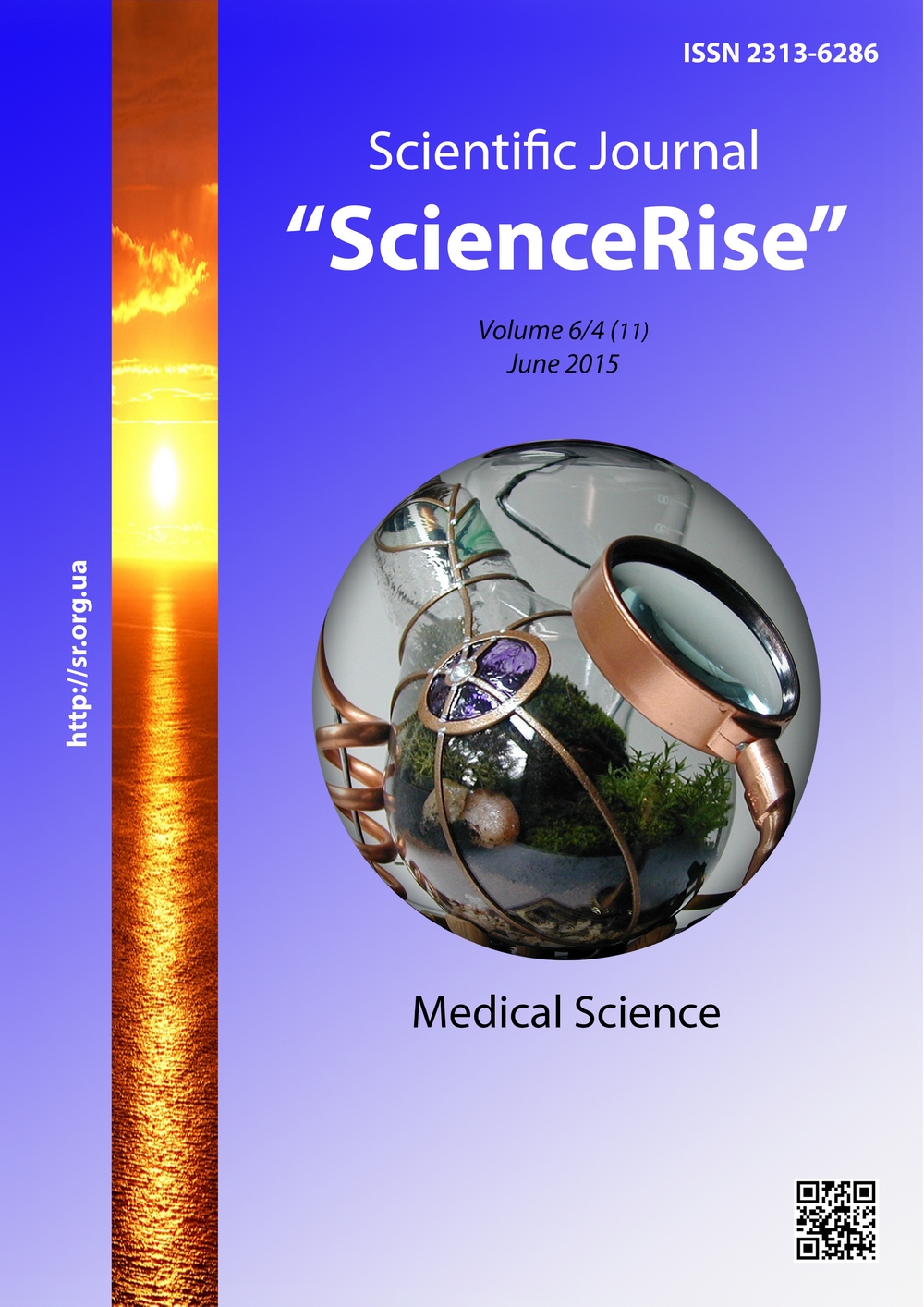Modern concepts of pathogenesis of ichthyosis
DOI:
https://doi.org/10.15587/2313-8416.2015.45312Keywords:
ichthyosis, keratinization, gene mutations, therapy, pathogenetic modelAbstract
The modern concepts of ichthyosis are rather ambiguous and need more precise definition. The modern conception of pathogenesis of ichthysosis is offered and considered in this article.
Aim. An aim is to analyze received data of our researches about molecular disturbances of keratin on the background of ichthyosis and the current data on the pathogenesis of disease.
Materials and methods. An analysis of the results of research in 70 patients with ichthyosis by the methods of the flow cytometry, immunohistochemistry and by immunologic methods is presented in an article.
Results. Authors revealed molecular, immunologic and immunohistochemical changes that realizes the disturbance of keratinization on the background of this disease. The model of pathogenesis of the various manifestations of gene mutations that causes ichthyosis is proposed and it can be taken into account when elaborating the new directions of therapy.
Conclusions. Gene mutations that cause ichthyosis realizes on the background of disturbance of the cell cycle causing cornification and disturb the local and general immune reactions that summarily lead to the clinical presentations of disease.
References
Oji, V., Tadini, G., Akiyama, M., Blanchet Bardon, C., Bodemer, C., Bourrat, E. et. al. (2010). Revised nomenclature and classification of inherited ichthyoses: Results of the First Ichthyosis Consensus Conference in Sorèze 2009. Journal of the American Academy of Dermatology, 63 (4), 607–641. doi: 10.1016/j.jaad.2009.11.020
Hernández-Martin, A., Aranegui, B., Martin-Santiago, A., & Garcia-Doval, I. (2013). A systematic review of clinical trials of treatments for the congenital ichthyoses, excluding ichthyosis vulgaris. Journal of the American Academy of Dermatology, 69 (4), 544–549.e8. doi: 10.1016/j.jaad.2013.05.017
Zhernosek, V. F., Lameko, E. V., Pochkaylo, A. S. (2014). Nasledstvenniy yhtyoz: Classification, Clinical manifestations, Diagnosis, Treatment: Textbook. method. posobye. Minsk: BelMAPO, 52.
Oji, V., Traupe, H. (2009). Ichthyosis: clinical manifestations and practical treatment options. American Journal of Clinical Dermatology, 10 (6), 351–364. doi: 10.2165/11311070-000000000-00000
Chamcheu, J. C., Wood, G. S., Siddiqui, I. A., Syed, D. N., Adhami, V. M., Teng, J. M., Mukhtar, H. (2012). Progress towards genetic and pharmacological therapies for keratin genodermatoses: current perspective and future promise. Experimental Dermatology, 21 (7), 481–489. doi: 10.1111/j.1600-0625.2012.01534.x
Brown, S. J., McLean, W. H. (2012). One remarkable molecule: filaggrin. Journal of Investigative Dermatology, 132 (3), 751–762. doi: 10.1038/jid.2011.393
Rice, R. H., Bradshaw, K. M., Durbin-Johnson, B. P., Rocke, D. M., Eigenheer, R. A., Phinney, B. S. et. al. (2013). Distinguishing Ichthyoses by Protein Profiling. PLoS ONE, 8 (10), e75355. doi: 10.1371/journal.pone.0075355
Richard, G. (2004). Molecular genetics of the ichthyoses. Am. J. Med. Genet., 131C (1), 32–44. doi: 10.1002/ajmg.c.30032
Sandilands, A., Sutherland, C., Irvine, A. D., McLean, W. H. I. (2009). Filaggrin in the frontline: role in skin barrier function and disease. Journal of Cell Science, 122 (9), 1285–1294. doi: 10.1242/jcs.033969
Smith, F. J. D., Irvine, A. D., Terron-Kwiatkowski, A., Sandilands, A., Campbell, L. E., Zhao, Y. et. al. (2006). Loss-of-function mutations in the gene encoding filaggrin cause ichthyosis vulgaris. Nature Genetics, 38 (3), 337–342. doi: 10.1038/ng1743
Tsvetkova, G. M. et. al. (2003). Patomorfolohyya boleznej kozhy: guidance for doctors. Moscow: Medicine, 496.
Rebrov, O. (2002). Statistical analysis of medical data. Application software package Statistica. Moscow: the media sphere, 312.
Nakaz vid 08.05.2009 № 312 Pro zatverdzhennja klinichnyh protokoliv nadannja medychnoi' dopomogy hvorym na dermatovenerologichni zahvorjuvannja. Available at: http://www.moz.gov.ua/ua/portal/dn_20090508_312.html
Downloads
Published
Issue
Section
License
Copyright (c) 2015 Світлана Володимирівна Дмитренко

This work is licensed under a Creative Commons Attribution 4.0 International License.
Our journal abides by the Creative Commons CC BY copyright rights and permissions for open access journals.
Authors, who are published in this journal, agree to the following conditions:
1. The authors reserve the right to authorship of the work and pass the first publication right of this work to the journal under the terms of a Creative Commons CC BY, which allows others to freely distribute the published research with the obligatory reference to the authors of the original work and the first publication of the work in this journal.
2. The authors have the right to conclude separate supplement agreements that relate to non-exclusive work distribution in the form in which it has been published by the journal (for example, to upload the work to the online storage of the journal or publish it as part of a monograph), provided that the reference to the first publication of the work in this journal is included.

